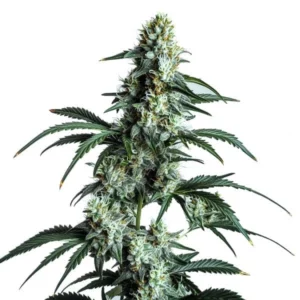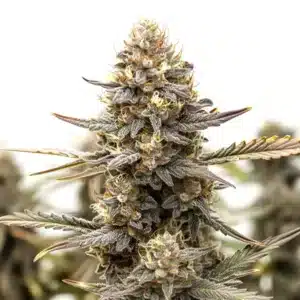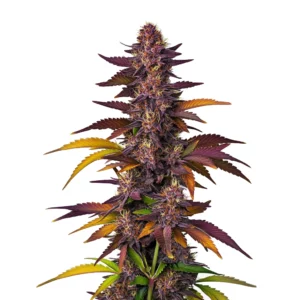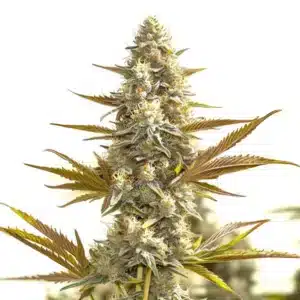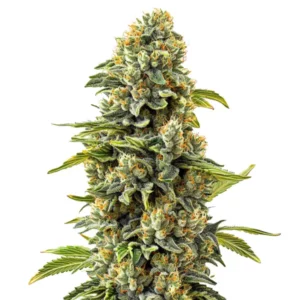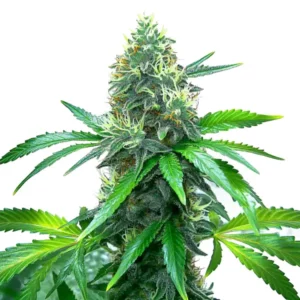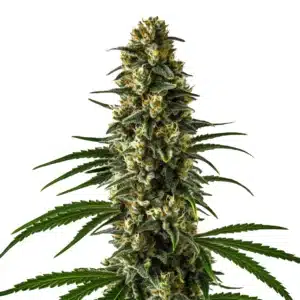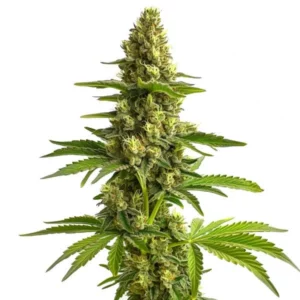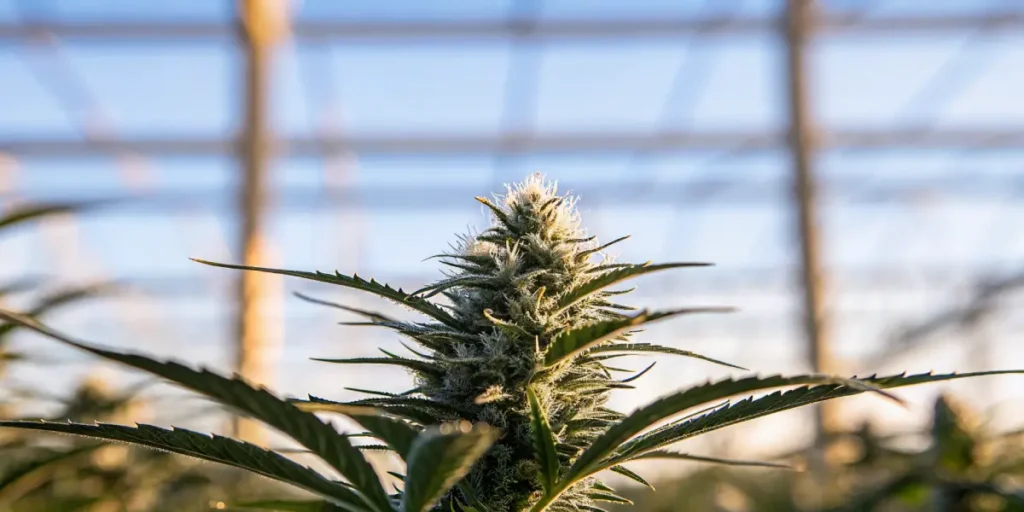
How Terpenes Affect Cannabis Aroma
Terpenes are the aromatic compounds found in cannabis and other plants. These natural compounds play a significant role in the aroma and flavor profile of cannabis. Each strain has its unique terpene profile, influencing its scent and taste. Think of terpenes as the essential oils of cannabis, providing each strain with its distinct fragrance.
Imagine walking into a garden full of roses, lavender, and citrus fruits. The various scents you experience are due to terpenes. In cannabis, these compounds create a symphony of aromas, from earthy and musky to sweet and fruity. The way terpenes affect cannabis aroma is similar; they define the olfactory experience of each strain.
Recommended Strains
Gelato
|
|
THC | 27% (High) |
|
|
Type | Feminized |
|
|
Yield | High |
|
|
Phenotype | 50% Indica / 50% Sativa |
Sour Diesel
|
|
THC | 22% - 25% (Medium) |
|
|
Type | Feminized |
|
|
Yield | High |
|
|
Phenotype | 30% Indica / 70% Sativa |
For growers and consumers alike, understanding the relationship between terpenes and cannabis scent can enhance both cultivation and consumption. Strains like Blue Dream, Gelato, and Sour Diesel each have a unique terpene profile that contributes to their specific aroma. By exploring how terpenes influence cannabis smell, enthusiasts can make informed choices.
What Are Terpenes?
Terpenes are organic compounds that provide a plant’s aroma and flavor. They are found in many plants, not just cannabis. These compounds are produced in the plant’s resin glands, the same place cannabinoids like THC and CBD are found. Terpenes serve various purposes, such as repelling predators and attracting pollinators.
In cannabis, terpenes do more than just contribute to the aroma. They also interact with cannabinoids to create what is known as the entourage effect. This means that terpenes can enhance or alter the effects of THC and CBD. That’s why two strains with the same THC level can have different effects; their terpene profiles differ.
The relationship between terpenes and cannabis scent is a fascinating aspect of plant biology. Each terpene not only carries its distinctive scent but also contributes to the overall fragrance of the plant. Understanding how terpenes affect cannabis aroma can open up new avenues for creativity in both cultivation and product development.
Moreover, the impact of terpenes on marijuana aroma extends beyond the initial olfactory experience. These compounds also interact with the user’s nervous system, potentially influencing mood and perception. As research into terpenes continues, we gain deeper insights into their multifaceted roles in cannabis and other plant species.
The Role of Terpenes in Cannabis Aroma
Terpenes are the primary drivers of the diverse scents we associate with cannabis. Their presence or absence can make a strain smell like pine, citrus, or even cheese. For instance, the terpene myrcene is often associated with earthy and musky aromas, while limonene is linked to citrusy scents.
Practical examples of how terpenes affect cannabis aroma can be seen in strains like Blue Dream. This strain is known for its sweet berry aroma, largely due to its high levels of the terpene myrcene. Similarly, Sour Diesel owes its pungent, diesel-like scent to the terpene caryophyllene.
The terpenes’ role in marijuana fragrance is not just limited to scent. They also contribute to the therapeutic potential of the plant. For example, some terpenes are known to have anti-inflammatory or anti-anxiety properties, adding another layer to their importance in cannabis use. This intricate interaction between terpenes and cannabinoids highlights the complexity of the cannabis plant.
When considering the cannabis terpene profile effects on aroma, it’s essential to recognize that these compounds work synergistically. The combination of different terpenes results in a unique scent experience for each strain. This synergy not only enhances the aroma but also influences the overall effects of the cannabis, making the selection of strains a personalized process for consumers.
Promos & Deals
Types of Terpenes and Their Aromas
There are over 100 terpenes identified in cannabis, each contributing to the plant’s unique aroma. Some terpenes are more common and have well-known scent profiles. Limonene, for instance, is recognized for its citrusy aroma and is found in strains like Gelato. On the other hand, pinene smells like pine needles and is prevalent in strains that remind you of a forest.
Another notable terpene is linalool, which has a floral scent similar to lavender. This terpene is often found in strains that are known for their calming effects. Each terpene can enhance the overall aroma and can be a deciding factor when selecting a strain for cultivation or consumption.
The impact of terpenes on marijuana aroma is evident in the diversity of scents and flavors they produce. Whether you’re a fan of sweet, earthy, or spicy aromas, understanding how terpenes influence cannabis smell can help you find the perfect strain. This knowledge is particularly useful for consumers looking to tailor their cannabis experience to their personal preferences.
Moreover, the relationship between terpenes and cannabis scent can be a vital tool for growers. By selecting strains with specific terpene profiles, they can cultivate plants that cater to particular consumer demands. This focus on terpene-rich strains not only enhances the aromatic qualities of cannabis but also adds value to the final product, making it more appealing in the market.
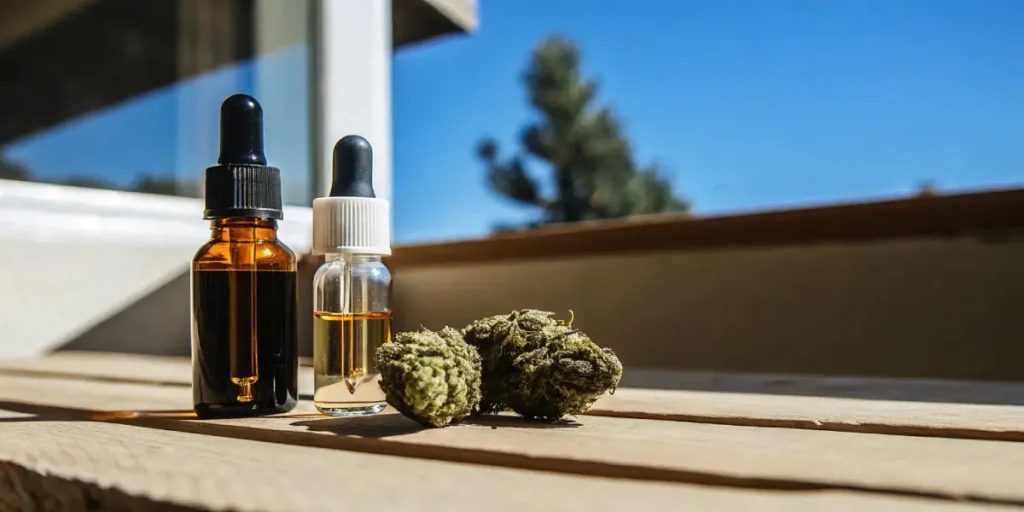
Examples of Terpene-Rich Cannabis Strains
Blue Dream is a prime example of a terpene-rich strain. Its sweet, berry-like aroma is mainly due to myrcene, but it also contains pinene and caryophyllene. These terpenes work together to create a unique aromatic experience.
Another strain, Gelato, is famous for its sweet and creamy aroma. This can be attributed to its high levels of limonene and caryophyllene. This combination gives Gelato its distinctive dessert-like scent, making it a favorite among users seeking a pleasant olfactory experience.
Sour Diesel stands out with its pungent, fuel-like aroma. This strain’s unique scent profile is due to the presence of caryophyllene and myrcene. The combination of these terpenes contributes to its sharp, unmistakable fragrance.
Exploring how terpenes affect cannabis aroma through these examples highlights the importance of understanding terpene profiles when choosing strains. Each strain offers a different sensory experience, driven by its unique blend of terpenes. This diversity is a testament to the complex nature of cannabis and its ability to cater to a wide range of preferences.
For those interested in the nuances of cannabis, delving into the terpene profiles of favorite strains can provide a deeper appreciation of the plant. By recognizing the terpenes’ role in marijuana fragrance, enthusiasts can enhance their enjoyment and knowledge of cannabis, leading to more informed cultivation and consumption decisions.
Practical Tips for Cannabis Growers
For growers, knowing the cannabis terpene profile effects on aroma can be an invaluable tool. Selecting seeds with desired terpene profiles can help cultivate plants with specific scents. For instance, if you prefer a citrus aroma, strains high in limonene like Gelato might be ideal.
Monitoring the growing environment also plays a crucial part in terpene development. Factors such as light, temperature, and humidity can influence terpene production. Ensuring optimal growing conditions can enhance the plant’s natural aroma, resulting in a more fragrant harvest.
Another practical tip for growers is to pay attention to the genetic lineage of the strains they are cultivating. Certain genetic backgrounds may be more predisposed to higher terpene production, thus influencing the overall aroma. By selecting strains with a rich terpene heritage, growers can maximize the aromatic potential of their crops.
Furthermore, utilizing technology and advanced cultivation techniques can aid in optimizing terpene profiles. Innovations such as controlled environment agriculture (CEA) allow for precise manipulation of environmental conditions, enhancing terpene production and ensuring a consistently aromatic yield.
Enhancing Terpene Profiles During Cultivation
Consider factors like soil composition and nutrient levels, as they can impact terpene production. Organic growing methods often result in more robust terpene profiles, as they allow the plant to express its natural characteristics.
Harvesting at the right time is also essential. Picking the buds too early or too late can affect the terpene content, altering the aroma. Paying attention to the trichomes, the tiny resin glands on the flowers, can help determine the ideal harvest time.
Post-harvest handling is equally important in preserving the delicate terpenes. Techniques such as gentle trimming and careful handling of the buds can prevent damage to the resin glands, which house the terpenes. This attention to detail helps maintain the integrity of the aroma throughout the drying and curing processes.
Lastly, ongoing research into terpene preservation continues to provide new insights into best practices for cultivation. By staying informed about the latest advancements in agricultural science, growers can refine their methods and produce cannabis with enhanced aromatic qualities, showcasing the true potential of terpenes.

FAQs
What are the most common terpenes found in cannabis?
Some of the most common terpenes in cannabis include myrcene, limonene, pinene, caryophyllene, and linalool. Each of these terpenes contributes to different aromas and effects. Myrcene is often associated with earthy scents, while limonene gives off a citrus aroma.
Pinene, as the name suggests, has a pine-like scent and is found in strains reminiscent of a forest. Caryophyllene has a spicy, peppery aroma, and linalool is known for its floral, lavender-like scent. These terpenes can be found in varying concentrations across different cannabis strains, influencing their overall fragrance.
Knowing the most common terpenes allows consumers and cultivators to make informed decisions about which strains to choose or grow. By recognizing the impact of terpenes on marijuana aroma, individuals can select strains that align with their personal preferences and desired effects.
As research into terpenes continues to evolve, new terpenes are being identified and studied, further expanding our understanding of how terpenes influence cannabis smell and its overall impact on the user experience. This ongoing exploration highlights the dynamic nature of cannabis and its potential for innovation.
How do terpenes influence the effects of cannabis?
Terpenes play a crucial part in the entourage effect, where they interact with cannabinoids like THC and CBD to modify the plant’s effects. For example, myrcene is believed to enhance the sedative properties of THC, making strains with high myrcene content more relaxing.
On the other hand, limonene is thought to have mood-lifting properties, making it a popular choice for users seeking an uplifting experience. The combination of terpenes and cannabinoids can significantly influence the overall effects of cannabis, making the terpene profile an important consideration when choosing a strain.
Besides to their influence on effects, terpenes also contribute to the user’s sensory experience. The relationship between terpenes and cannabis scent adds another dimension to the consumption experience, engaging multiple senses and enhancing enjoyment.
By understanding how terpenes affect cannabis aroma and effects, consumers can tailor their cannabis choices to suit specific needs, whether for relaxation, creativity, or social interaction. This knowledge empowers users to make more personalized and satisfying selections.
Can terpenes affect the taste of cannabis?
Yes, terpenes not only influence the aroma but also the flavor of cannabis. The same compounds responsible for the plant’s scent are also responsible for its taste. For example, limonene gives both a citrus aroma and flavor to strains like Gelato.
When consuming cannabis, the terpenes engage your senses, enhancing the overall experience. This is why some strains may taste fruity, spicy, or earthy. Understanding how terpenes affect cannabis aroma and flavor can help you choose strains that match your preferences.
The impact of terpenes on marijuana aroma and flavor is a key factor in the cultivation and consumption of cannabis. By selecting strains with desirable terpene profiles, users can enjoy a more nuanced taste experience, elevating their overall enjoyment of the plant.
For cultivators, focusing on terpene-rich strains can lead to the production of cannabis that stands out in the market for its unique flavor profiles. This emphasis on taste, alongside aroma, highlights the multifaceted appeal of cannabis and its potential for culinary innovation.
Why is it important to preserve terpenes during cultivation?
Preserving terpenes during cultivation is vital for maintaining the plant’s natural aroma and flavor. Terpenes are volatile compounds that can easily evaporate if not handled properly. Factors such as high temperatures, improper drying, and poor curing can lead to terpene loss.
By carefully controlling the growing environment and post-harvest processes, growers can ensure that the plant retains its full terpene profile. This results in a more aromatic and flavorful final product, enhancing the overall cannabis experience for consumers.
Preserving terpenes not only benefits the sensory qualities of cannabis but also its therapeutic potential. The terpenes’ role in marijuana fragrance and effects underscores the importance of maintaining their integrity throughout the cultivation process.
Investing in terpene preservation techniques is a worthwhile endeavor for growers seeking to produce high-quality cannabis. This focus on aroma and flavor can distinguish their products in the competitive cannabis market, attracting consumers who appreciate a well-rounded sensory experience.
How can consumers use terpene information to choose cannabis strains?
Consumers can use terpene information to select strains that align with their desired effects and preferences. By understanding the impact of terpenes on marijuana aroma and effects, users can make informed decisions. For instance, those seeking relaxation might opt for strains high in myrcene.
Conversely, if an uplifting experience is preferred, strains with high limonene content, like Gelato, might be ideal. Many seed banks, including Blimburn Seeds, provide terpene profiles for their strains, allowing consumers to make knowledgeable choices based on aroma and effect preferences.
Leveraging terpene knowledge enables consumers to personalize their cannabis experiences, enhancing satisfaction and enjoyment. This focus on individual preferences underscores the versatility of cannabis and its ability to cater to diverse needs.
As the cannabis industry continues to grow, access to detailed terpene profiles becomes increasingly important for making informed purchasing decisions. This transparency empowers consumers to explore new strains and discover the unique characteristics that resonate with them, fostering a deeper connection to the plant.



